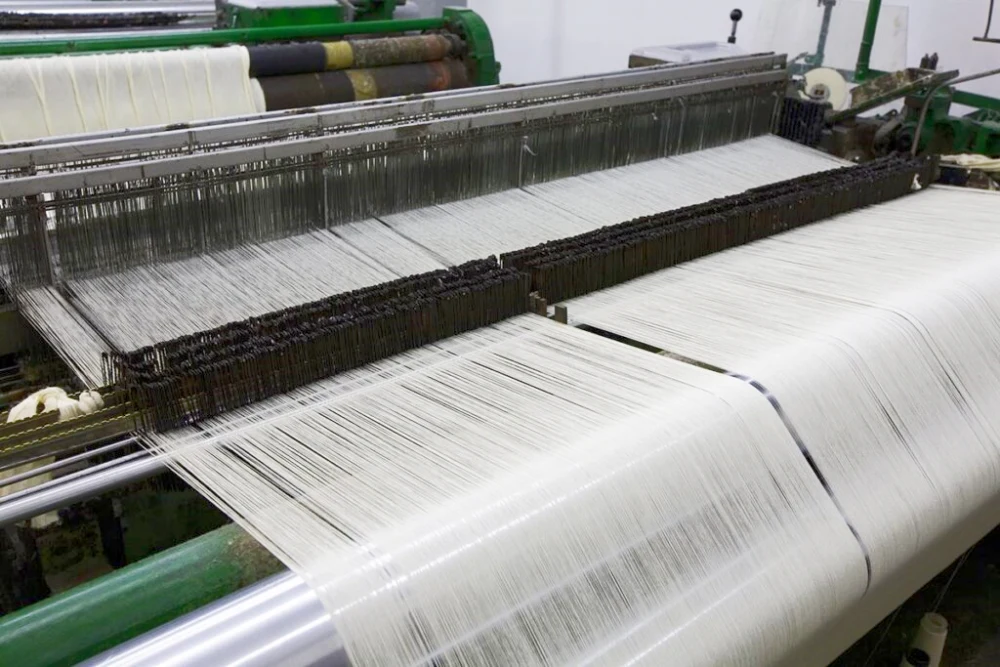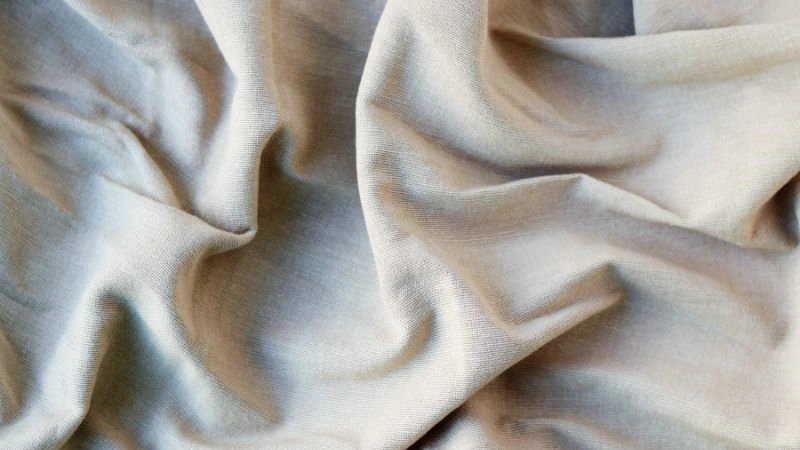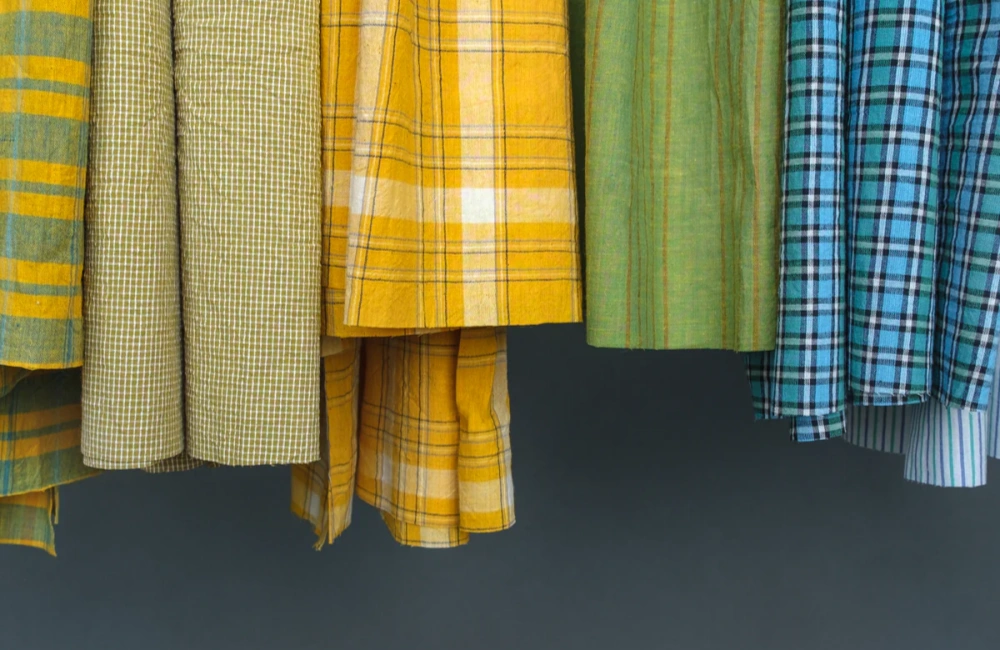In the realm of textiles, understanding the essence of What Is Cotton Woven Fabric forms the foundation of countless garments and household items. Renowned for its strength, breathability, and versatility, cotton woven fabric is a cornerstone of both fashion and practicality.
This comprehensive guide delves into its composition, production methods, and diverse industry applications. Whether you’re an enthusiast seeking to deepen your knowledge or a designer exploring new possibilities, this exploration of cotton woven fabric promises to illuminate its pivotal role in our daily lives.
What Is Cotton Woven Fabric?

Warp, weft, and weave—these terms define woven fabrics. But What Is Cotton Woven Fabric? Simply put, they are fabrics created on a loom by weaving yarns together. The ‘warp’ is the yarn that runs lengthwise, while the ‘weft’ crosses it horizontally across the textile.
To weave these fabrics, two sets of yarns are interlaced perpendicularly on the loom, forming the fabric structure. Woven fabrics encompass a wide range, from natural linens and smooth silks to semi-synthetic rayons and synthetic polyesters. Alternatively, these fibers can also be knitted together, though that’s a different process altogether.
What Is Cotton Woven Fabric Made Of?
Curious about what cotton woven fabric is made of? It all starts with natural cotton fibers, delicately harvested from cotton plants. These fibers are spun into yarns, which are then intricately woven on a loom. The result? A breathable, soft fabric renowned for its comfort and versatility, perfect for everything from cozy tees to luxurious bedding.
What Is Cotton Woven Fabric Production Process?

Yarn Preparation: It all begins with raw cotton fibers, meticulously cleaned and spun into fine yarns. This step ensures the yarns are smooth and strong, ready to be woven into fabric.
Warping: Next, these yarns undergo the warping process. Here, the yarns are arranged in long, parallel rows, known as the ‘warp.’ This setup forms the foundational structure of the fabric.
Weaving: Now comes the intricate art of weaving. The warp yarns are stretched vertically on a loom, while the ‘weft’ yarns are woven horizontally across them. This weaving process creates the characteristic crisscross pattern that defines woven fabrics.
Finishing: Once woven, the fabric undergoes several finishing treatments. This includes processes like washing to remove any sizing or impurities, dyeing to add color, and sometimes additional treatments for softness or special finishes for durability.
What Is Cotton Woven Fabric Properties?

What Is Cotton Woven Fabric Physical Properties
Cotton woven fabric packs a punch when it comes to performance. Its exceptional strength and durability make it a reliable choice for everything from casual wear to heavy-duty workwear. Plus, its incredible ability to absorb moisture and allow air to circulate keeps you cool and comfortable, no matter the weather.
What Is Cotton Woven Fabric Sensory Properties
Experience the ultimate in comfort with cotton woven fabric. Its soft, gentle touch against your skin feels like a warm hug. Whether you’re lounging at home or hitting the town, cotton’s luxurious drape and incredible breathability make it a fabric you’ll love to wear.
What Is Cotton Woven Fabric Classification?

Based On Weave Patterns
Plain Weave
Plain weave is celebrated for its straightforward construction, offering simplicity and durability with a consistent, uniform appearance. In this weave, each weft yarn alternates over and under each warp yarn, creating a tightly woven fabric ideal for everyday essentials like cotton shirts and household linens.
Examples of plain weave fabrics include cotton broadcloth, known for its versatility, and muslin, favored for its softness and breathability in various textile applications.
Twill Weave
Twill weave stands out for its diagonal rib pattern, which provides strength and texture. In this weave, the weft yarn crosses over one or more warp yarns in a consistent manner. It’s widely used in durable clothing like denim jeans, cotton twill trousers, and robust workwear. Examples include denim and chino fabric, showcasing twill weave’s versatility in everyday apparel and sturdy textiles.
Satin Weave
Satin weave creates a smooth and glossy surface that feels luxurious to the touch. In this weave, warp yarns pass over multiple weft yarns, resulting in a lustrous finish that enhances the fabric’s elegance. It is widely used in formal attire, evening gowns, and high-end bedding due to its ability to drape beautifully and reflect light.
Examples of satin weave fabrics include cotton satin and sateen, which exemplify its application in creating refined and sophisticated textiles.
Dobby Weave
Dobby weave features small geometric patterns or textures that enhance depth and visual interest. Weavers create these patterns directly on the fabric using a dobby loom. This weave is commonly employed in crafting dress shirts, blouses, and decorative home textiles, where the intricate designs add a touch of sophistication.
Examples of fabrics using dobby weave include dobby cotton and seersucker, each demonstrating how this technique enriches both apparel and interior decor with its textured allure.
Jacquard Weave
Jacquard weave features intricate patterns and designs with varying textures. Crafted using a jacquard loom, this weave method intricately weaves complex patterns, resulting in raised motifs. It is highly versatile, finding application in upholstery, curtains, and luxury fashion pieces.
Examples of jacquard weave textiles include brocade and damask, showcasing its ability to add elegance and sophistication to various decorative and apparel items.
Based On Weight And Texture
Cotton woven fabrics come in a range of weights, each with its own unique feel and purpose. Lightweight cottons like voile, muslin, and batiste are airy and perfect for summer tops or breezy dresses. If you prefer a bit more substance, medium-weight options like poplin, broadcloth, and oxford offer a classic look and versatile feel.
For durability and structure, heavyweight cottons like denim, canvas, and duck are your go-to choices for everything from jeans to sturdy bags.
Specialty Cotton Fabrics
Organic Cotton: Grown without harmful chemicals, organic cotton is a sustainable choice that’s gentle on your skin and the planet. It often feels soft and luxurious.
Cotton Blends: Combining cotton with other fibers like polyester or spandex can create fabrics with enhanced properties. For instance, cotton-polyester blends are often wrinkle-resistant, while cotton-spandex blends offer stretch and comfort.
Finished Cotton Fabrics: These cottons undergo extra processes to improve their characteristics. Mercerized cotton is known for its lustrous sheen and increased strength, while combed cotton is exceptionally soft and smooth.
What Is Cotton Woven Fabric Advantages?
Breathability and Comfort: Cotton is a natural fiber that allows air to circulate freely, keeping you cool and comfortable. Its soft texture feels great against the skin.
Absorbency: Cotton is a moisture-wicking champ! It absorbs sweat and helps you stay dry, making it perfect for activewear and everyday clothing
Hypoallergenic: Sensitive skin? No problem! Cotton is gentle and less likely to cause allergic reactions.
Durability: Well-made cotton fabrics can withstand plenty of wear and tear, making them a long-lasting choice.
Versatility: From casual t-shirts to elegant dresses and sturdy home textiles, cotton can do it all!
Sustainability: Cotton is a renewable resource, and there’s a growing focus on organic and sustainable cotton production.
What Is Cotton Woven Fabric Disadvantages?
Cotton woven fabric has several drawbacks. It’s prone to wrinkling and shrinkage, requiring careful care. Its color can fade over time due to sunlight and washing. While breathable, it doesn’t provide much warmth and can feel damp in humid conditions. Cotton cultivation is also water-intensive and often relies on harmful pesticides, impacting the environment.
What Is Cotton Woven Fabric Used For?

Apparel
Cotton reigns supreme in the fashion world! Its soft, breathable nature makes it perfect for everything from everyday essentials like t-shirts and jeans to elegant dresses and tailored suits. From casual to formal, cotton has you covered. Plus, it comes in countless colors, patterns, and weights, so there’s a cotton fabric for every style and occasion.
Home Textiles
Create a cozy and inviting atmosphere with cotton woven fabrics. Imagine sinking into soft cotton sheets, wrapping yourself in a plush cotton towel, or adding a touch of elegance with cotton curtains. It’s the ultimate fabric for comfort and style in your home. From the bedroom to the living room, cotton brings warmth and sophistication to any space.
Industrial Applications
Beyond fashion and home decor, cotton woven fabric plays a vital role in various industries. Its durability and absorbency make it ideal for medical textiles, filters, and industrial wipes. Cotton’s versatility shines in unexpected ways, contributing to essential products we use every day.
How To Care And Maintain Cotton Woven Fabric?
Cotton woven fabric is a popular choice for its comfort and versatility. To keep it looking its best, treat it gently. Wash in cold water on a delicate cycle, and air dry whenever possible to prevent shrinkage. When ironing, use a low temperature and a pressing cloth. Avoid harsh chemicals and bleach to maintain the fabric’s softness. With proper care, your cotton pieces will stay soft and durable.
Conclusion
So, there you have it! What is cotton woven fabric? It’s a natural wonder that has stood the test of time. From its soft feel to its incredible versatility, it’s no surprise that cotton remains a top choice for clothing and home goods. By understanding its properties and care, you can make the most of this amazing material. Enjoy the comfort and style that cotton woven fabric brings to your life!
